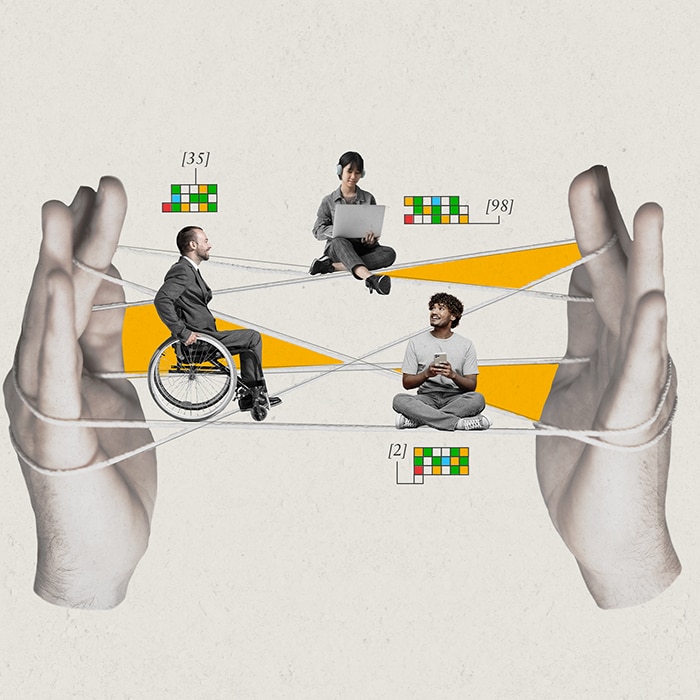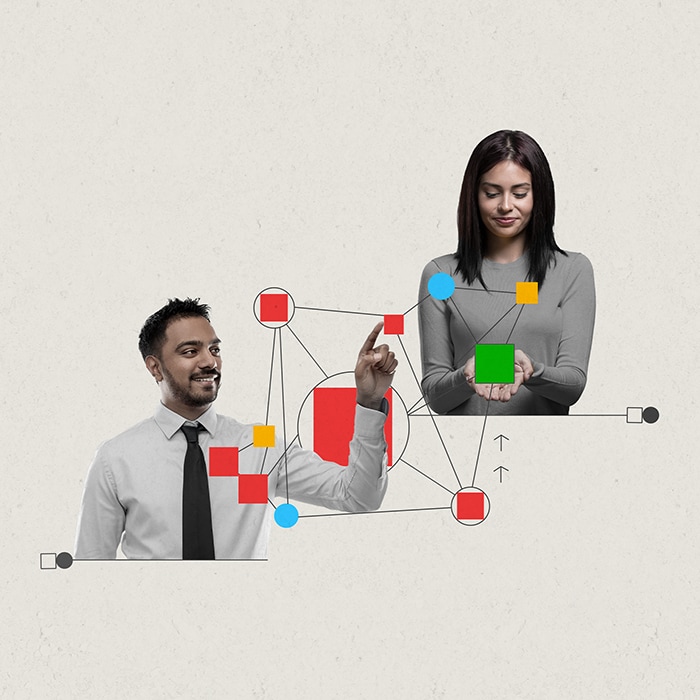Insight

2024 Global Human Capital Trends
It’s time to trade in the rules, operating constructs, and proxies of the past. Reimagining boundaryless work amid these disruptions is no longer hypothetical—or optional. The old proxies previously relied upon to measure performance may no longer apply, and there’s no easy playbook to follow that will enable organizations to thrive in this new environment. So what’s next for organizations and workers? What steps can we take to create a future full of possibility and hope in the uncertainty of a boundaryless world?
Prioritizing human performance can help organizations make the leap into a boundaryless future. We define human performance as a mutually reinforcing cycle with compounding, shared value for workers, organizations, and society— (Human outcomes) x (Business outcomes) = Human performance.
Our 2024 Global Human Capital Trends research reveals that a focus on the human factor is emerging as the bridge between knowing what shifts are shaping the future of work and doing things to make real progress toward putting them into action to create positive outcomes.
Human performance in a boundaryless world
When people thrive, business thrives: The case for human sustainability
For true sustainability, organizations need to create value for all people connected to them. It’s not just a nice idea—it’s central to better outcomes for organizations and humanity.
Read the article here

As human performance takes center stage, are traditional productivity metrics enough?
In an era of human-centered work, new sources of data and artificial intelligence can help organizations shift from measuring employee productivity to measuring human performance.
Read the article here

The transparency paradox: Could less be more when it comes to trust?
Greater transparency can help organizations build trust—or erode it. What considerations should leaders keep in mind to ensure transparency is helping and not hindering?
Read the article here

What do organizations need most in a disrupted, boundaryless age? More imagination.
Generative AI and other technologies may be exposing an imagination deficit. Scaling human capabilities like curiosity and empathy can help organizations replenish it.
Read the article here

How play and experimentation in digital playgrounds can drive human performance
As technology continues to spark change in the relationship between workers and organizations, they need safe spaces to cocreate their common future.
Read the article here

One size does not fit all: How microcultures help workers and organizations thrive
Rather than striving for one common culture, organizations should enable a “culture of cultures” tailored to the needs of local teams while aligning to organization-wide values.
Read the article here

From function to discipline: The rise of boundaryless HR
The future of work requires human resources to evolve, shifting from a siloed function to a boundaryless discipline integrated with the people, businesses, and community it serves.
Read the article here

Methodology
Deloitte’s 2024 Global Human Capital Trends survey polled 14,000 business and human resources leaders across many industries and sectors in 95 countries. In addition to the broad, global survey that provides the foundational data for the Global Human Capital Trends report, Deloitte supplemented its research this year with worker- and executive-specific surveys to represent the workforce perspective and uncover where there may be gaps between leader perception and worker realities. The executive survey was done in collaboration with Oxford Economics to survey 1,000 global executives and board leaders in order to understand their perspectives on emerging human capital issues. The survey data is complemented by over a dozen interviews with executives from some of today’s leading organizations. These insights helped shape the trends in this report.


